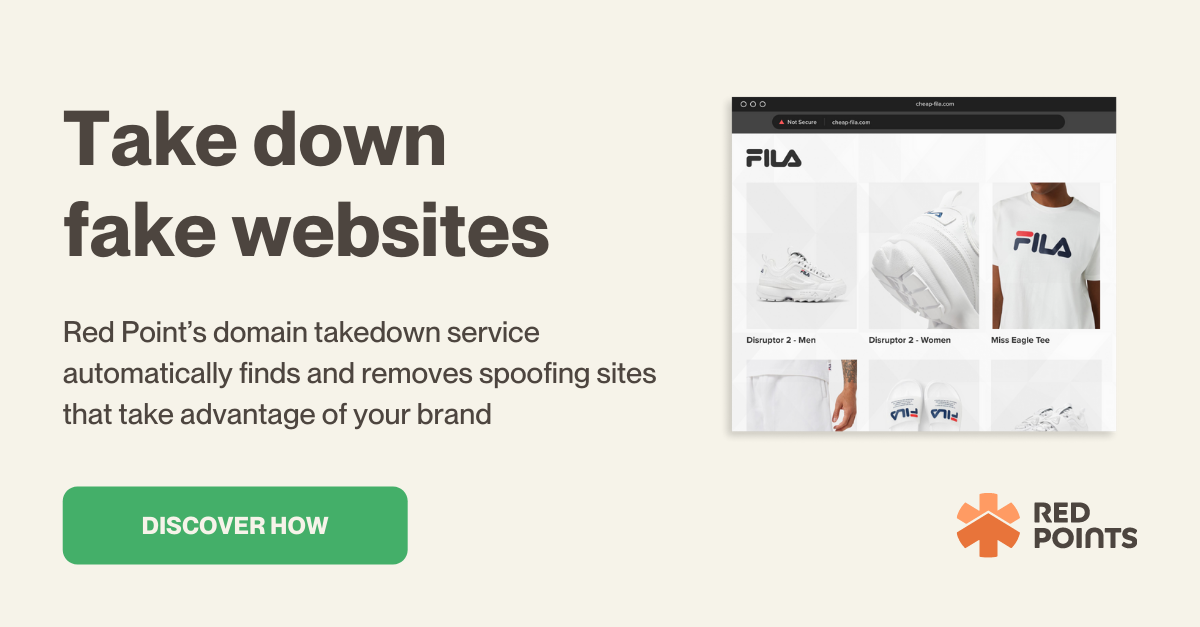Websites that are fake, fraudulent, or scams abound on the internet. It’s a sad truth, but one that must be faced. With the rise of the internet, we’ve seen an increase in the ease with which we shop, bank, and engage with others. However, this development has also brought with it new dangers—new ways in which fraudsters might fleece the unwary.
By 2025, cybercrime is expected to cost businesses throughout the world an estimated $10.5 trillion per year, up from the $3 trillion it cost in 2015. Cybercrime, according to Cybersecurity Ventures, is the largest ever transfer of economic value, growing at a 15% annual rate.
Fake websites are now a common part of the strategy. Read on to find out more about it.
Scope of the problem
Internet shopping scams have existed since the dawn of the internet, but according to a report released by the Federal Trade Commission, they increased by double between December 2019 and May 2020.
Fake websites pose different threats depending on who set them up and why. There are people out there who want to take your money and your personal information. Others are just trying to scam you out of your money by selling you fake or nonexistent things. While both are shady, the former can have a far greater impact on your finances and credit score than the latter.
In 2021, 37% of complaints to the Better Business Bureau’s Scam Tracker were about online shopping scams, and 34% of those victims reported a financial loss as a result.
Scammers are now using social media sites like Facebook and Twitter to build up fake online stores. A few times a year, they operate the store for a limited period of time, selling counterfeit apparel and jewelry. After making a few sales, the stores vanish from view.
It might be difficult to catch online purchasing scams. You’ll have to conduct your own website scammer check if you can’t rely on antivirus or browser defenses to warn you of a fake website.
The impacts of fake websites
Companies suffer a tarnish on their reputation as a result. When a knock-off item fails to perform as expected, or comes apart rapidly, or does not match the buyer’s expectations, the customer is more likely to blame the real company than the counterfeiter.
As we all know, one of the most effective marketing tools is word of mouth. As a result, if these customers receive subpar replicas of a product, the word will get out that the actual thing is subpar as well.
In addition, customers will provide negative feedback online, solidifying the current crisis in the brand’s reputation and bolstering the notion that the genuine brand produces low-quality merchandise. As a public indicator of brand quality, these online reviews have a powerful effect.
What is a fake website?
Any illegitimate internet website used to lure users into fraud or malicious attacks is referred to as a fake website. Scammers take use of the internet’s anonymity to hide their genuine identity and objectives behind a variety of masks. False security warnings, giveaways, and other deceptive formats can be used to provide the appearance of authenticity.
How does a fake website work?
Many communication methods, such as social media, email, and text messaging, can be used to entice internet users to a fake website. In some cases, search engine optimization (SEO) strategies are used to manipulate search results, resulting in malicious websites being ranked highly.
Users are more open to these tactics when they seem as enticing offers or terrifying warnings. Psychological ploys are the driving force behind the majority of scam websites.
Types of fake websites
Even though they have similar mechanisms, fake websites function under separate principles. The more you know about the types of premises a scam website might use, the more equipped you’ll be to recognize future attempts. A few frequent fake website formats:
Fake Websites
In order to obtain personal information, phishing websites provide misleading scenarios. Banks and email providers are common targets of these scams.
Perpetrators usually lure people to the website with emails or other messages saying an error or other issue necessitates action. The scam asks for account login, credit card details, or other personal data. This leads to the misuse of any information gained from the victims.
Fake Shopping Websites
Scammers often use a bogus or low-quality internet store to acquire victims’ credit card information.
These frauds are problematic because they can sometimes supply products or services that appear trustworthy. But the quality is always poor. And it’s a free way to get your credit card information for unauthorized usage.
Scareware Scam Websites
Website scams that pose as antivirus programs use bogus security alert pop ups to trick you into downloading malware. Fear and hurry may push you to download a solution if they claim your device is infected.
Without a true internet protection suite, consumers may fall victim to virus downloads.
Scam Contest Websites
Sweepstakes scams lure users to participate by offering substantial rewards in exchange for financial information.
Payment for this service may appear on the prize as a tax or as a delivery cost. Users who volunteer information risk being scammed and never receiving their award.
How to identify a fake website?
There are a few ways to check if a website is fake, such as,
Double-check to see whether the URL has been misspelled
A misspelled URL is one of the most telling signs of a fake website. For example, fraudsters may use a different URL name, such as amaz0n.com, or even a different domain extension, such as amazon.org rather than amazon.com.
Look out for site seals.
You may usually click on a site seal to learn more about how the website was verified and to see the seal’s authenticity status. If a seal does nothing when clicked, it is likely an illegal copy of a legitimate seal.
Pay attention to how you spend your money.
Direct bank transfer payments should be avoided at all costs. No matter how much money you send to an account, you’ll never get it back if the transaction turns out to be a hoax. Payment using a credit card provides some security in the event of a problem.
Find a lock
When a website has an SSL/TLS certificate, the padlock on the site indicates that the site’s data is encrypted. In the address bar, look for the lock icon in the upper left corner. Domain Validation, Organization Validation, and Extended Validation all display a lock when a TLS certificate is present.
Domain Validation Certificate: This certificate certifies that the domain is owned by the rightful owner. No specific information about the organization can be gleaned from DV certificates, however. As a result, commercial usage of DV certificates is discouraged.
Organization Validation Certificate: Official business registration databases are authenticated by the CA (certificate authority) in the Organization Validation certificate. A commercial or public website should use this type of certificate.
Extended Validation Certificate: The highest level of authenticity for your brand and customers is provided by an Extended Validation certificate. To guarantee that EV certificates are valid, CAs may request certain papers and personal contact from EV certificate holders. Global leaders use them to ensure user trust by offering users high assurance that the website is real and owned by the company they assume they are transacting with.
Most browsers will display a “not secure” warning if they detect no lock on a website. Since online fraud has become more prevalent in recent years, it’s no longer enough to merely search for a padlock to verify a website’s authenticity.
Data is encrypted and browsers consider it safe when they see a padlock. Unfortunately, in today’s world, just because a website is secure doesn’t mean you can trust it with your money or personal data. As long as the site has a padlock, it doesn’t guarantee the authenticity of any given page. Up to half of the phishing sites now have a padlock on them, according to research.
To gain a lock, fraudsters typically employ DV certificates, which are low-level TLS certificates that some certificate authorities issue for free. They don’t have to show that the company is real using DV certificates. Even if they may use an OV or EV certificate from time to time, criminals are generally discouraged from doing so due to the additional steps required to obtain them, such as proving business registration, paying with a valid credit card, and responding to certificate authority inquiries.
TLS certificates are normally used to detect fake websites; nonetheless, a certificate might temporarily cause havoc.
Look past the lock.
Clicking on the lock once will expose extra information if you look past it. If you click on the lock, it will say “Issued to: [Company Name]” underneath “Certificate (Valid)” for the highest level of authentication. Only desktop browsers are supported for this feature. If you’re using a mobile browser or a desktop, the principles of verifying a website’s security remain the same.
Conduct a website audit using a website checker
A website checker can be used to determine whether a website is secure when in doubt. Employing a secure website check, you may find out if a website has any weaknesses if it is using encryption, and what level of verification the website possesses.
What’s Next
With Red Points, you can learn how to report a scam website and defend yourself from fraud and other online threats. The domain takedown service provided by Red Points automatically detects and removes spoofing websites that attempt to profit off your brand.
You can refer to this article for information on how to take down fake websites.
See how Red Points can find and remove fake websites that take advantage of your brand and help you recover revenue that’s rightfully yours.





